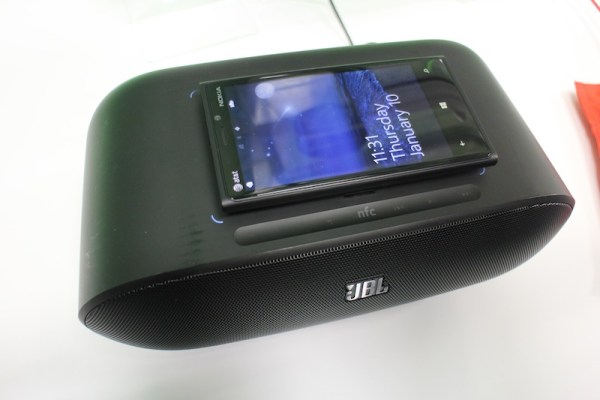
The fact that we still need to carry USB cords on the go whenever we need to charge electronics is appalling. It’s 2013, the future is already here. If the Qi Wireless technology exists, we don’t know why any gadgets are manufactured without it built-in.
As part of the Wireless Power Consortium, Qi can be integrated into mobile manufacturers products so cords can, once and for all, become obsolete. A tiny electromagnetic field generated through a pad features a metal coil that, when placed above Qi-enabled conductors, communicates with its mate to send a charge to your device. It isn’t the first time the concept of charging a phone wirelessly has been bandied about, but this technology marks the first time that it has been practical and available to most manufacturers.

What this all means is that essentially any surface can become a charging pad. At Qi’s CES booth, we saw a table lamp with Qi integrated into the base. There were also speaker docks that require no connector, so you won’t have to worry if your iPhone needs a Thunderbolt or Lightning slot. We saw tables with docks seamlessly built into the surface to give restaurants, hotels, and cafes cool options to invite customers in and stay. At the moment, Qi runs at a maximum capacity of five watts, equal to a full cellphone charge in approximately one hour. Basically, if this technology exists on a larger scale, power mad journalists here in the CES press room would never have to fight over power outlet availability, and that equals a lot less cat fights.

Editors' Recommendations
- This wireless mouse and keyboard are powered by mechanical energy
- Razer’s $99 Opus X wireless headset aims to cover all of your audio needs
- HP’s Elite Wireless Earbuds are made for remote work collaboration


